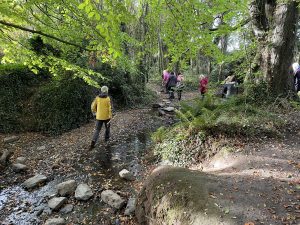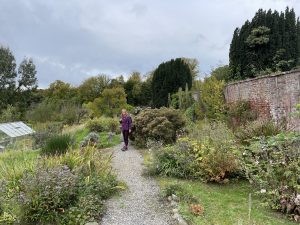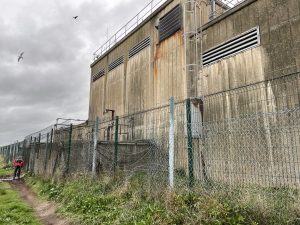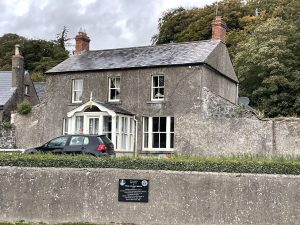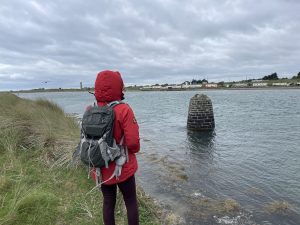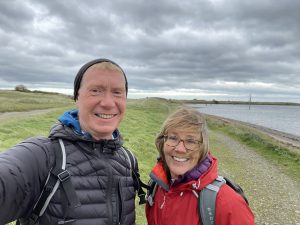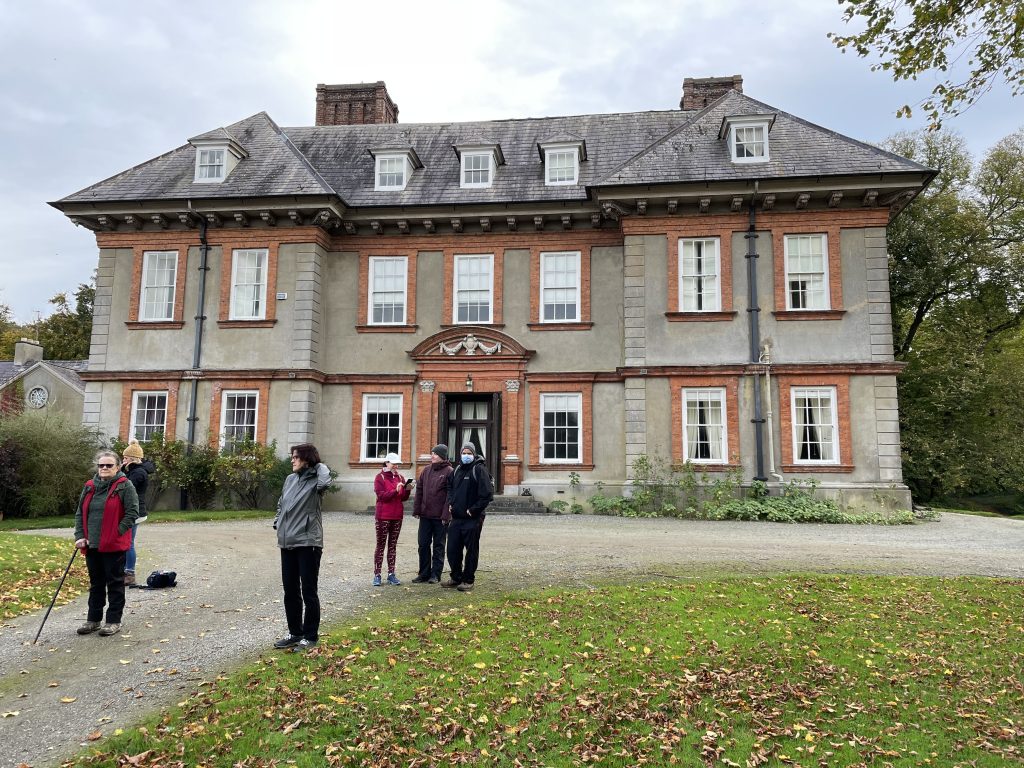Ireland day 0025. Saturday 23 October 2021- Beaulieu
| Today’s summary | Joined the Boyne Valley Walkers group for a guided walk around the normally-closed grounds of Beaulieu House then walked out to the Boyne estuary near Baltray | ||||
| Today’s weather | Bright and dry, quite windy. Light shower in the late afternoon. No sun. About 13C | ||||
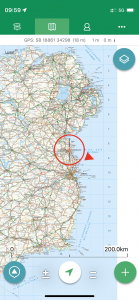 |
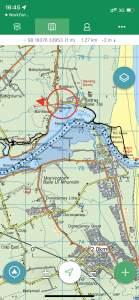 |
||||
| Today’s overview location (the red cross in a circle shows where Val and I are at the moment) |
Close-up location (click the buttons below for gpx files of the morning walk in the Beaulieu estate and the afternoon walk to the coast) Beaulieu Baltray |
||||
Commentary
It’s hard to know where to start with today’s blog, because so much happened which was really interesting. There’s a danger that this could become an extended history and science lesson though so I will just summarise some of the things we learnt below.
- The Boyne Valley Walkers are another bunch of super-friendly people, and we were fortunate enough to be able to join them today for this guided trip round the extensive grounds of Beaulieu House, normally closed to the public but opened today by special negotiation, located on the north bank of the Boyne estuary, to the east of Drogheda
- Beaulieu House was built in 1650 and was the first large house to be built in Ireland without fortifications. A bold move, considering the turbulent political environment at the time (and pre-dating the battle of the Boyne by 40 years)
- Everyone in Louth has a nickname. So Frank, our leader, was normally known as Dusty, and his colleague Margaret was Mog
- The reason why the grounds are closed is similar to the reason why there are hardly any public rights of way in Ireland – ie public liability. If a landowner grants someone access to their land and they have an accident, they may have to pay considerable reparations if there is an accident. So it’s safer just to deny access to everyone. In fact Ciara – the redoubtable current owner of the house – had tolerated access to her woodlands until relatively recently. Then someone fell and broke a leg and sued her for €50,000. The case was eventually thrown out at the High Court but only after a lengthy legal battle and the grounds have been steadfastly closed ever since
- Thomas Wright, founder of the Ecuadorian navy, was born on the Beaulieu estate 222 years ago
- Drogheda is a major producer of magnesium oxide, or periclase. This material has a melting point of half the temperature of the sun and is used in furnace linings. It is made through a complex reaction between seawater (which contains magnesium chloride) and limestone – both of which Drogheda has in abundance. The Premier Periclase factory is on the southern boundary of the Beaulieu estate
- The marker cairns running alongside the river Boyne estuary, which guide vessels in the safe channel between Drogheda and the sea, were designed by Captain William Bligh – of Mutiny on the Bounty renown
- In 1348, the Black Death struck Drogheda and wiped out a quarter of the population (putting Covid somewhat into perspective). To try to ward off the evil spirits which were assumed to be responsible for this plague, wealthy landowners carved grotesquely macabre Cadaver Stones which were displayed at prominent places on their lands. There are only 13 remaining in Ireland and one of them is in the private chapel on the Beaulieu estate. You can see details of the skull in the banner image at the top of this post.
We learned all this in the space of five hours so after leaving the estate as the gates were locked behind us, Val and I drove further east to visit Thomas Wright’s house and the periclase factory seawater treatment plant. Then we strode out to the coast on a short linear walk, admiring Captain Bligh’s work en route, eventually linking up with the southern end of the Termonfeckin (yes that place again) walk where the Boyne estuary meets the beach. After a brief pause to digest everything we had learned that morning (and also to eat biscuits) we returned to the car and then to Tesco to pick up all the homewares we will need to furnish our new flat.
Tomorrow’s another early start as we head to Howth with the Dublin Walking Club, so it’s time to resume sandwich-making duties again now.
Today’s photos (click to enlarge)

